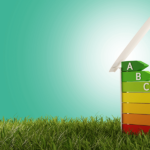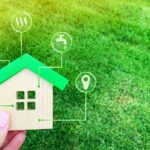Exploring the balance between growth and sustainability in real estate development has become a critical challenge for the industry. This blog post delves into how we can assess and maintain this equilibrium, ensuring that our urban spaces flourish without compromising our planet’s health.
Through a comprehensive analysis of sustainable practices, innovative solutions, and the latest trends, we aim to illuminate the paths that real estate stakeholders can tread to promote an environmentally sound future. The keyword here is balance – achieving it is essential not only for sustainability but for the very future of real estate.
An Introduction to Sustainable Development in Real Estate
Real estate’s role in global sustainability is undeniable, with buildings accounting for nearly 40% of worldwide carbon emissions. However, a shift towards sustainability is not just a moral imperative but a financial and functional one. This section explores how integrating ‘balance’ into real estate development can lead to better outcomes for both the planet and investors.
In the pursuit of balance, developers are implementing green technologies, renewable energy sources, and sustainable materials. From green roofs to energy-efficient lighting systems, these practices contribute to a smaller environmental footprint and potential cost savings in the long term.
Nevertheless, the quest for balance in real estate sustainability requires more than just technological advancements. It demands a holistic approach, considering social and economic factors, ensuring that developments are not just environmentally friendly but also equitable and accessible to all.
Understanding the overarching principles of sustainability in real estate—economic vitality, environmental protection, and social responsibility—lays the foundation for a balanced approach to development.
The Metrics of Sustainability in Real Estate
Assessing the sustainability of real estate projects involves a set of metrics that quantify the balance between development and environmental stewardship. These metrics include energy efficiency ratings, water conservation measures, and waste reduction strategies.
One commonly used set of standards is the Leadership in Energy and Environmental Design (LEED) certification. LEED provides a framework for assessing building sustainability and awards points based on several criteria, reflecting the balance achieved in a project’s design and execution.
Moreover, the adoption of smart building technologies allows for real-time monitoring and management of resource use. This not only aids in minimizing environmental impact but also in optimizing operational efficiency, showcasing the symbiosis between sustainability and practicality.
Challenges to Achieving Sustainability
While the benefits of sustainable real estate are clear, numerous challenges lie in the path to achieving it. Key among these is the initial higher cost of green buildings, which can deter investors despite the potential for long-term savings and value.
Moreover, regulatory hurdles and a lack of awareness or expertise in sustainable practices can stall progress. Achieving balance in real estate sustainability thus requires not only technical solutions but also policy innovation and education.
Collaboration across all sectors of society—including government, private sector, and communities—is essential to overcome these obstacles and pave the way for a sustainable future in real estate.
Innovative Solutions for Sustainable Real Estate
Innovation is at the heart of sustainable real estate development. Novel materials like carbon-capturing concrete, alongside advances in renewable energy, are paving the way for zero-emission buildings.
Furthermore, the integration of green spaces within urban developments not only enhances biodiversity but also provides essential services like stormwater management and heat island mitigation, underlining the importance of balance in urban planning.
Community-focused development strategies also play a critical role in sustainability, fostering environments where people can live, work, and play in close proximity, thus reducing the dependency on carbon-heavy transportation.
The Future of Sustainable Real Estate
The future of real estate hinges on our ability to balance growth with sustainability. As we move forward, the industry must embrace innovative solutions and adapt to changing environmental and social landscapes.
Investing in sustainable real estate today is not just an ethical choice—it is a strategic one. By prioritizing balance, developers and investors can anticipate the evolving needs of society and the planet, positioning themselves as leaders in a new era of real estate.
Achieving balance in real estate development is not a destination but a journey. As technologies evolve and our understanding of sustainability deepens, the industry must remain adaptable, innovative, and committed to the principles of sustainability. This commitment to balance will not only safeguard our environment but also ensure the long-term success and resilience of the real estate sector.


